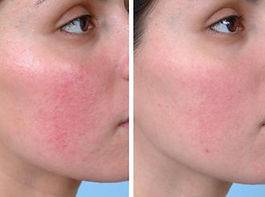Our skin, the body's largest organ, serves as a protective barrier against the external environment. While many are familiar with common skin conditions like acne or eczema, there exist several rare skin disorders that are less known but equally important. Understanding these conditions can foster empathy and awareness for those affected.
1. Peeling Skin Syndrome
Imagine your skin shedding like the layers of an onion, revealing tender new skin beneath. This is the reality for individuals with Peeling Skin Syndrome, a rare genetic disorder characterized by painless peeling of the outer skin layer. Symptoms often include itching, redness, and blistering. While there's no definitive cure, treatments focus on moisturizing the skin to reduce dryness and prevent infections.
2. Chromhidrosis
Chromhidrosis is a condition where individuals produce colored sweat, often in hues of blue, green, yellow, or black. This occurs due to the accumulation of lipofuscin pigment in sweat glands. While harmless, it can cause significant psychological distress. Treatment options include topical capsaicin cream and botulinum toxin injections to reduce sweating.
3. Necrobiosis Lipoidica
Necrobiosis Lipoidica presents as shiny, reddish-brown patches on the skin, commonly on the shins. The affected skin becomes thin and may ulcerate, leading to slow-healing wounds. This condition is often associated with diabetes. Management includes controlling blood sugar levels and using topical steroids to reduce inflammation.
4. Epidermolytic Ichthyosis
Epidermolytic Ichthyosis is a genetic disorder where the skin becomes thick, scaly, and prone to blistering. At birth, infants may have red, blistered skin that later develops into hard scales, especially around joint creases. Treatment focuses on moisturizing the skin and preventing infections.
5. Morgellons Disease
Morgellons Disease is a controversial condition where individuals experience crawling sensations on the skin, leading them to believe fibers or parasites are emerging from sores. The exact cause is unknown, and it often overlaps with psychological factors. Treatment is challenging and may involve both dermatological and psychological approaches.
6. Argyria
Argyria is characterized by a blue or gray discoloration of the skin resulting from excessive exposure to silver. This can occur through ingestion or prolonged contact with silver-containing substances. The condition is generally permanent, and while it doesn't pose serious health risks, it can cause cosmetic concerns.
7. Harlequin Ichthyosis
Harlequin Ichthyosis is a severe genetic disorder where infants are born with thick, hard skin covering most of their bodies. This skin forms large diamond-shaped plates separated by deep cracks. Immediate medical attention is crucial, and ongoing treatment involves regular moisturizing and care to prevent infections.
8. Epidermolysis Bullosa
Epidermolysis Bullosa is a group of rare diseases causing the skin to be extremely fragile, leading to blisters and tears from minor friction or trauma. Symptoms can range from mild to severe, and there is currently no cure. Management focuses on wound care, pain control, and preventing complications.
9. Hidradenitis Suppurativa
Hidradenitis Suppurativa is a chronic skin condition characterized by small, painful lumps under the skin, typically in areas where skin rubs together. These lumps can break open, leading to tunnels under the skin and scarring. Early diagnosis and treatment are essential to manage symptoms and prevent progression.
10. Vitiligo
Vitiligo is a condition where the skin loses its pigment cells, leading to white patches on different parts of the body. The exact cause is unknown, but it may be related to an autoimmune disorder. While there's no cure, treatments like phototherapy and topical medications can help restore some color.
Understanding these rare skin conditions enhances awareness and empathy for those affected. While some of these disorders have limited treatment options, ongoing research continues to seek better management strategies and potential cures.


